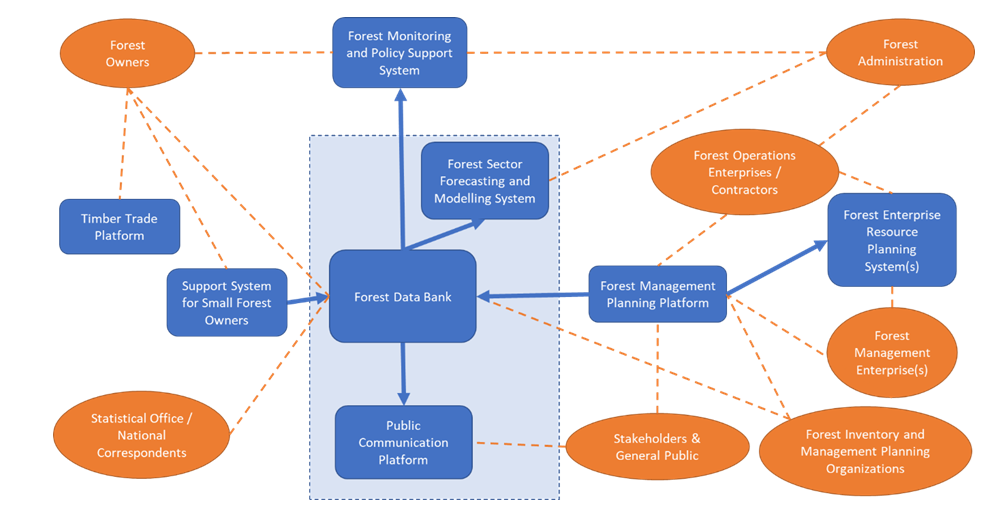Phase 4: IT tactical planning
In Phase 4, action plans (tactical plans) are formulated to achieve the IT and business strategies. This plan consists of:
(1) strategic projects
(2) strategies for acquisition of IT resources
(3) strategies for human resource training
(4) strategies for outsourcing IT services
Finally, these components of the tactical plan are prioritized according to the current governance structure and to the effect expected. A cost-effectiveness analysis should ensure the correct project portfolio and scope have been chosen.
Choosing the right approach and size for information system implementation is crucial for the success of FIS implementation. The approach should align with the organization's strategic objectives. A mismatch can lead to a system that does not support key business processes or fails to deliver expected benefits.
The scale of the project must be manageable within the organization's resource constraints. Overly ambitious projects can strain financial and human resources, while too small a scale may not adequately address business needs.
The success of an information system largely depends on user adoption. The chosen approach should consider the needs, skills, and acceptance levels of end-users. A system that is too complex or not user-friendly will face resistance, reducing its effectiveness. The approach and size should also reflect the organization's risk tolerance. Larger, more complex implementations are inherently riskier, with higher chances of delays, cost overruns, and failure to meet objectives.
Involvement of stakeholders in the development and implementation of an information system is a key factor for enhancing user adoption. Early stakeholder involvement helps in accurately capturing and understanding the actual needs and requirements of the end-users. This ensures that the software is designed to meet real-world challenges and is more likely to be embraced by its intended audience. When stakeholders are involved from the early stages, they develop a sense of ownership and commitment to the project. This emotional investment can lead to greater enthusiasm and support for the software, promoting its adoption. Stakeholders can act as change agents within their respective domains. Their involvement helps in preparing the ground for the changes that the new software will bring, thereby reducing resistance and facilitating smoother transition and adoption.
Continuous feedback from stakeholders during the development process can lead to improvements and refinements in the system. This iterative process helps in creating a product that is more aligned with user expectations and needs. Stakeholder involvement reduces the likelihood of misunderstandings and misinterpretations regarding functionalities of the system. Clear communication from the outset can ensure that the final product meets expectations, leading to higher satisfaction and adoption rates. By understanding the capabilities and limitations of the end-users, organizations can better plan for necessary training and support systems. Adequate training and support are crucial for encouraging adoption and effective use of the software.
If not all elements of the FIS are necessary at once, a ‘supermarket approach’ should be used, choosing only those needed for a situation or country. One should avoid the temptation to implement all possible elements of the FIS as seen in figure below. The forest sector in each country certainly possesses its individual features, conditions and limitations, which should be taken into consideration. Instead, the ‘supermarket approach’ should be attempted, by choosing from the set of all possible elements only those which are needed in a particular situation.

The system should be scalable and flexible to adapt to future business changes. Choosing a system that is too rigid or small may require costly modifications or replacements as the business evolves. The approach should ensure compatibility and efficient integration with existing systems. Poor integration can lead to data silos, inefficiencies, and increased operational risks. Effective change management is critical in information system implementation. The approach should include strategies for managing the change process, training users, and providing support to ensure a smooth transition.
One of the most difficult aspects of FIS development, is achieving consistency and effectiveness of the system within the financial and organizational constraints of a country’s forest sector. Much attention should be paid to thoroughly analyse existing processes and solutions and evaluate which should be kept as they are, which can be changed or modernized and to what extent, and which should be built anew. It is also advisable to carry out an analysis of funds available for building and maintaining FIS components.
Sometimes, a country may have some already functioning FIS components. These should be analysed to determine how well they fit current expectations. If they fit well, they should be improved rather than replaced, as users will be accustomed to them. However, sometimes, for technical efficiency and compatibility with other components, the old system must be completely rebuilt whilst retaining its user interface and process structure.
The total cost of changes should be evaluated against potential gains. A thorough cost-benefit analysis should be conducted to ensure that the benefits of the new system outweigh the costs. This analysis helps in determining the appropriate scale and scope of the implementation. An often-overlooked aspect is the hidden cost of business processes not aligning with how people and organizations see their role, and the ease with which they can operate processes.